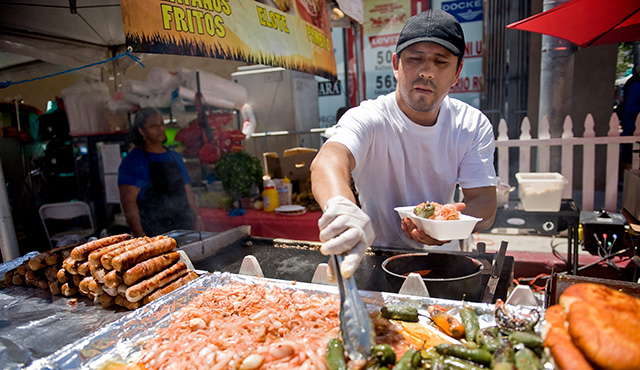Many holidays on our calendar are rich with meaning and diversity. Nations with large Hispanic populations, for instance, have many holidays to celebrate saints, mark Catholic feasts and honor Mary, the mother of Jesus. On each of these holidays, special meals are prepared to commemorate the occasion.
New Year’s delicacies
Día de los Santos Reyes, also known as Epiphany, is celebrated on Jan. 6. After the traditional wreath-shaped Rosca de Reyes (three kings bread) has been eaten, the ponche con piquete (spiked hot cider), tamales and other traditional foods continue to flow for New Year’s fiestas.
New Year’s parties in Mexico include not only traditional foods, such as bacalao, a dried, salted codfish; and buñuelos, a light, fried dessert; and ponche – a traditional hot punch; but also some cultural traditions aimed at receiving blessings in the coming year.
Celebrations before and during Lent
Carnaval, an official Mexican holiday that kicks off a five-day celebration before Lent, is celebrated with great fanfare in early March. During Carnaval the whole town parties into the night, dressed in their masquerade outfits, enjoying food and drink and liquor. In the evenings there are fireworks displays including the traditional castillo, or castle, a large fireworks platform unique to Mexico.
During Easter week, street vendors sell aguas frescas, which are fruit-flavored waters. Fresh fruit ice bars (paletas) and ice cream are available. Pambazos are chicken- or cheese-filled rolls that are covered in a spicy salsa. Another carnaval treat is platanos, which are fried plantains with a sweet cream topping.
Spring customs and foods
Cinco de Mayo commemorates the victory of Mexican forces over the French army at the Battle of Puebla on May 5, 1862. It is not, as many people think, Mexico’s Independence Day, which is Sept. 16. On Cinco de Mayo, traditional Mexican fare includes lamb barbacoa that has been smoked underground in banana leaves, carnitas topped with queso fresco, pickled onions and homemade salsa verde wrapped in a warm homemade corn tortilla that has been heated on a comal, a smooth, flat griddle.
Heading into autumn
In most regions of Mexico, Nov. 1 is called Día de los Santos Inocentes (Holy Innocents Day) or Día de los Angelitos (Day of the Little Angels), honoring deceased children and infants. Deceased adults are honored on Nov. 2, known as Día de los Muertos (Day of the Dead).
On Día de los Muertos, the almas, or the spirits of the dead, are said to come back for family reunions. Many families set up ofrendas (altars) in their homes to honor the memory of deceased loved ones and to welcome their visiting souls. The traditional offerings placed on the altar include skulls (calaveras) or full skeletons, some made from an edible substance such as sugar, chocolate, or amaranth.
Advent and Christmas fiestas
While many people around the world gather together on Dec. 25 to deck the halls and exchange gifts with family and friends, Latinos’ celebrations begin well before Christmas Day and sometimes last past the first week of January.
From December 16 to 24, Las Posadas (holiday processions) commemorate the journey of Mary and Joseph to Bethlehem and their search for a place to stay. Family and friends visit one another and enjoy traditional foods, such as hot spiked punch, fried rosette cookies known as buñuelos, and steaming tamales.
While most Americans set out cookies for Santa Claus on Christmas Eve, Mexican families gather to celebrate Nochebuena. Most gatherings include a large feast, traditional holiday music, dancing, gift-giving and, depending on the family’s religious beliefs, a trip to a late Mass known as Misa del Gallo. The festivities often last well into the wee hours of the Christmas morning.

